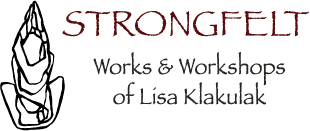Online & On Point! Coursework
OVERVIEW OF THE FELT JEWELRY SERIES: MATERIAL, TECHNIQUE & IMPACT
Learning is focused on how wool’s properties inform technique for dry fiber preparation/layout and wet felting to build integrity of felt material while simultaneously developing specific form and surface in a small scale format. By no means, however, is the extensive content of the series applicable only to making smaller objects as the methodology offered can guide those interested in working larger to modify the size and weight of fiber layout. The nuanced conditions for wet felting and fulling including the assistance of soap, water, temperature and agitation as well as the force of the maker in their rapidity of movement, infliction of pressure and direction of agitation, are articulated in response to the state of the wool throughout the instructional videos.
Each course in the series is developed around a core concept that is applied to solid forms, 2D planes and hollow form. Modules within a course are organized intentionally to build on prior learning so to be able to push into new territory and like the courses in the series, are meant to be experienced sequentially.
To use the analogy of home construction:
Course 1 FOUNDATIONAL STRUCTURE will lay the foundation and build the framework.
Course 2 APPLICATIONS OF PARTIAL FELT will apply the flooring and dry wall.
Course 3 TEXTURING will lay the rugs, hang the curtains and place the art. (course not yet released)
PARTICIPANT TESTIMONIALS
Course Descriptions:
Click course titles below for the course descriptions
Wet Felting Solid Forms, 2D Planes, Hollow Forms for Encasing Objects & Connections for Composing
6 learning modules, 10 weeks, 2 supported projects, 15 participants max
(+2 scholarship seats offered when class is full)
Course hosted on the Ruzuku platform.
Course Fee $745 payable with Paypal or a credit card through Stripe
(a payment plan is now available for $390 at registration and $390 one month later)
Next edition January 12- March 23, 2025 with platform access through June 1, 2025.
Enrollment link will be shared in the next newsletter out the week of July 22-26, 2024!
18-30 years of age? Apply for a NEXT GENERATION SCHOLARSHIP.
Develop an in-depth understanding of foundational structure for refinement, strength and flexibility in wet felting based on the concept of space for the wool filaments to move and the direction of encouragement by the maker. Multi-dimensional form will be constructed through connecting solid forms, 2D planes and a variety of felt encased objects within one continuous felt skin and by employing strong clasping/hinging mechanisms. Ideally, demonstrated studies are meant to be repeated, modified and uniquely coalesced to become pathways to approach your ideas and visions rather than to repeat those of others.
Module Topics & Course Structure:
Solid Form Felting is the topic for Modules 1-3 and one module will become accessible per week starting on a Sunday for the first three weeks of the course and will continue to be accessible, as will all modules, through the end of the formal course instruction + an additional 10 weeks. Each module contains an average of 1.5 hours of video demonstration divided into two segments and a PDF that outlines the content, clarifies the math involved in assessing layout & shrinkage and will assist with long term retention. Module studies are suggested, completed at your own pace and level of extensiveness during that week and participants are encouraged to post pictures, questions and comments for group discussion on the chat forum. A design prompt will be given for week four and participants will implement their new learning and compose/propose a project based on their personal aesthetic. Each participant will have an individual zoom meeting ideal for their time zone for direct instructor feedback that may or may not be open to the entire group depending on that participant’s preference, keeping in mind that everyone will learn more if these meetings are shared experiences. Making the project will ensue after the design meeting and finished work will be posted when completed during week 5 for showcasing/critique. Similarly, 2D Plane and Hollow Form for Encasing Objects will be the focus for the next three weeks of Modules 4-6 followed by another design prompt and the same format for a second project for a total of 10 Weeks. Examples of the studies from Modules 1-6 along with participants’ projects from prior editions that began in the summer of 2021 can be viewed in the image carousels below. Additionally, course projects can be viewed on the Post-Secondary Coursework teaching page from when the content of this course was delivered online during the summer of 2020 though NSCAD University.
Course 1 content is equivalent to that of approximately 8-9 days of face to face STRONGFELT workshop content + 2 supported projects. Nearly 9.5 hrs of video instruction with a broad and close up camera angle may be accessed for 5 months from the beginning of the course (double the course length), but will not be downloadable. 40 pages of PDFs will be printable.
No materials provided.
Upon enrollment, participants will receive a welcome email and access to an introductory video illustrating an ideal set up for working, household and easily accessible tools/equipment to gather and a few items to order if not already a well stocked fiber enthusiast/felter. Print the accompanying Equipment, Tool & Material list PDF for specifics about sizes and amounts so you can be prepared to begin the course on the date scheduled.
The course is in English. Participants will need computer access, a strong internet signal and a digital camera/phone for sharing and documenting your work. Basic computer navigation skills suggested.
Content is © STRONGFELT, inc. All Rights Reserved. Please do not share your access to the online video or pdfs as this is nearly two decades of my experimenting, analyzing, refining, as well as detailed articulation & sequencing for optimal instruction. Do please encourage those you feel would enjoy and benefit from such learning to take the course as this will allow STRONGFELT, inc to continue to produce additional courses of high quality. Thank you.
Online & Onpoint! Course 1 FOUNDATIONAL STRUCTURE Module Studies
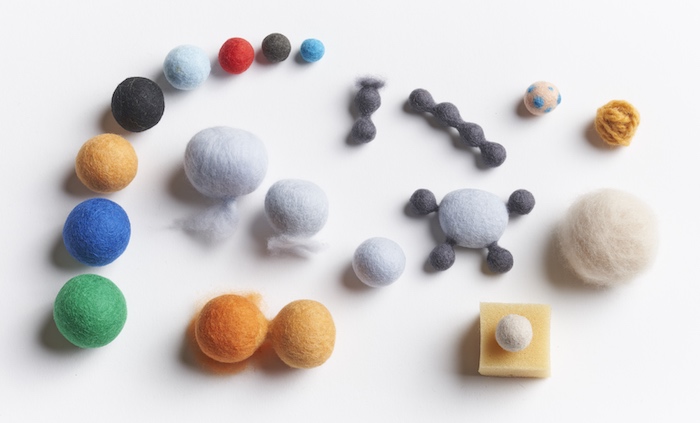
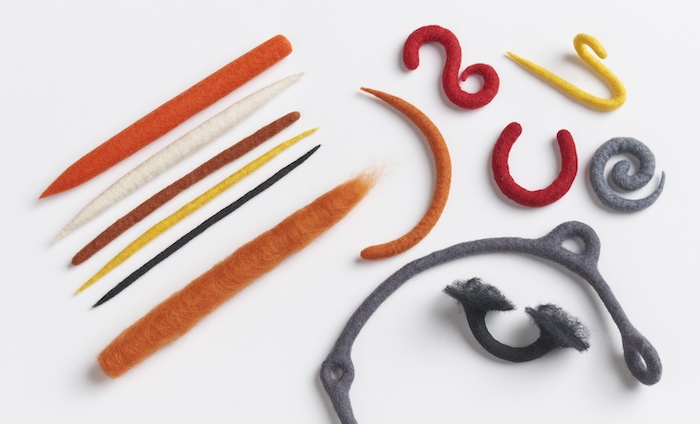
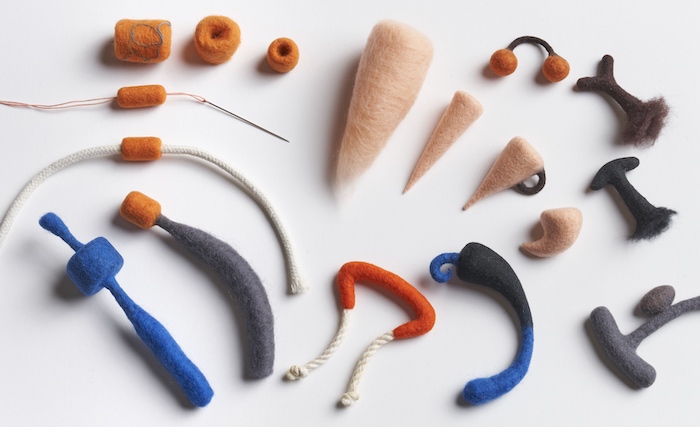
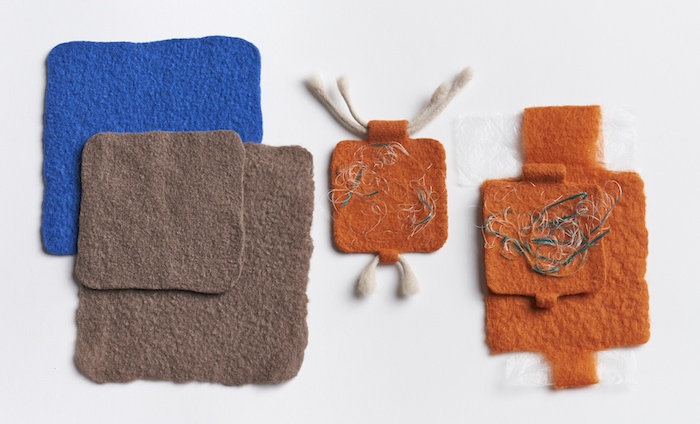
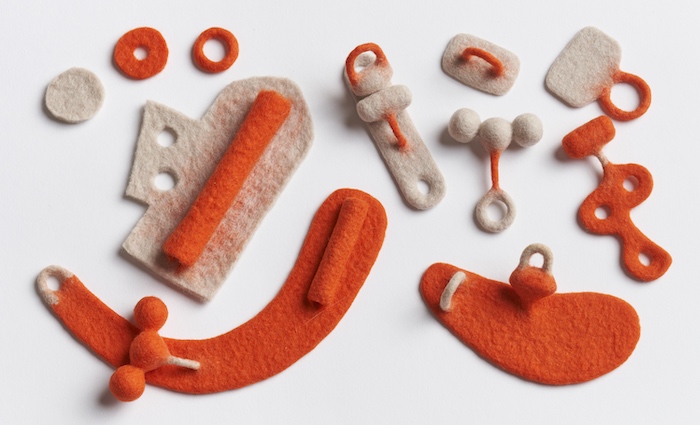
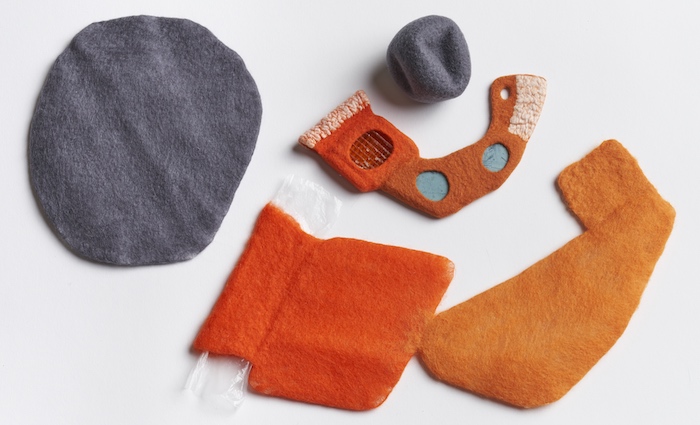
Online & Onpoint! Course 1 FOUNDATIONAL STRUCTURE Participants’ Work
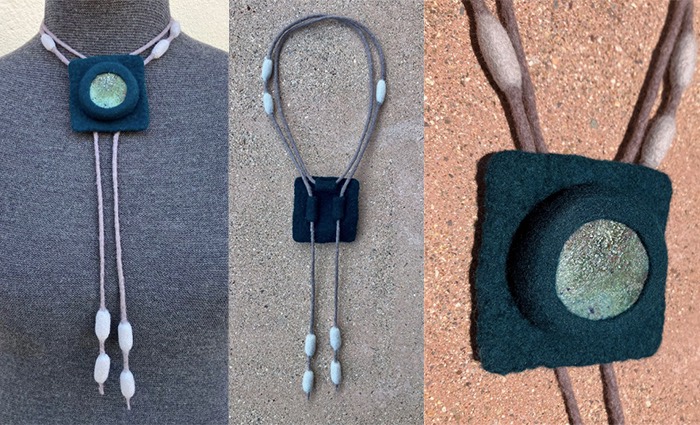
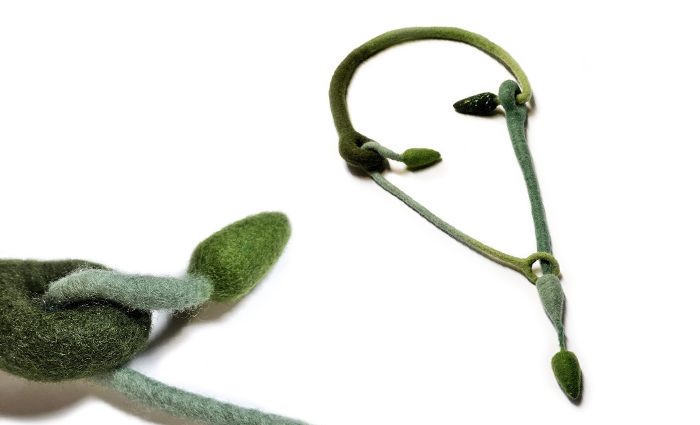
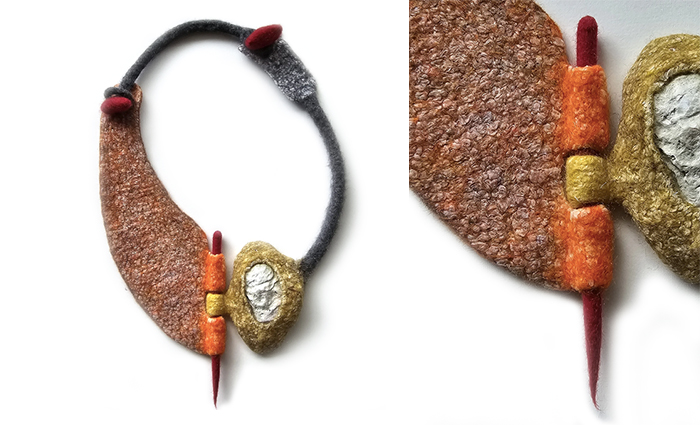
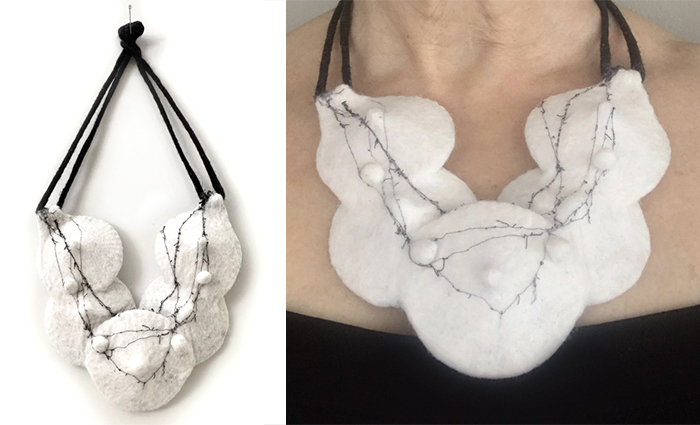
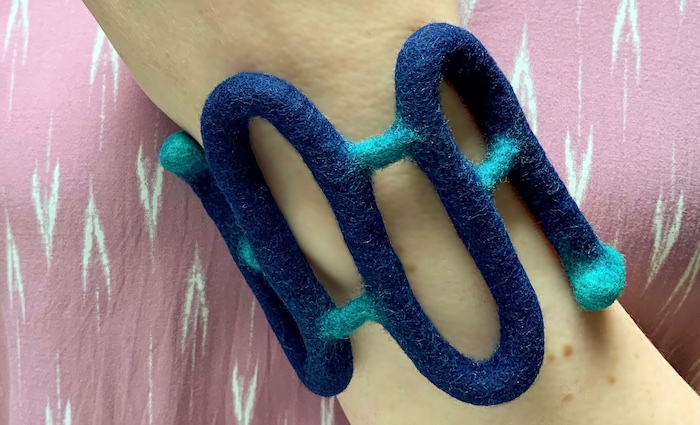
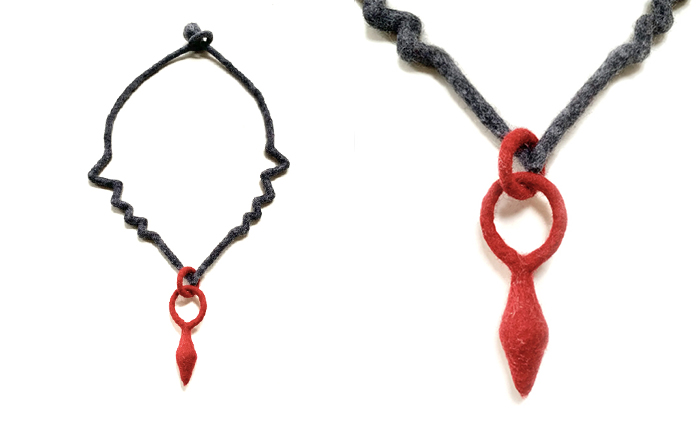
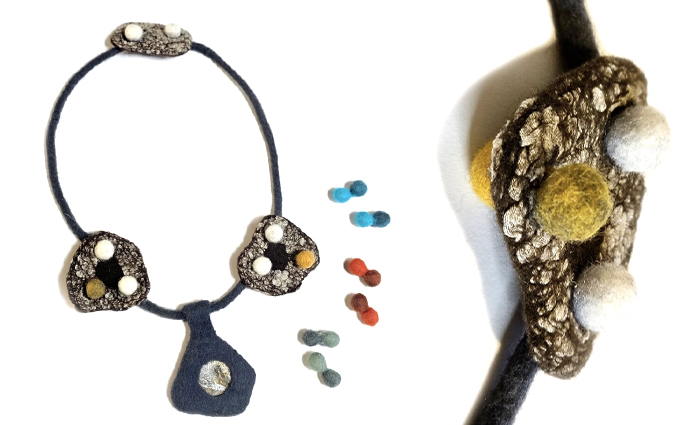
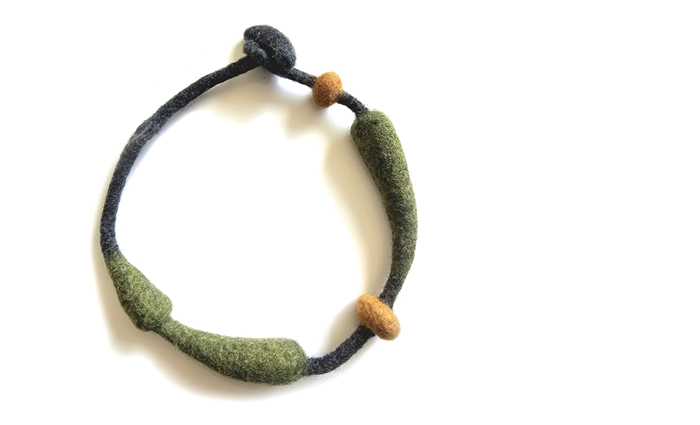
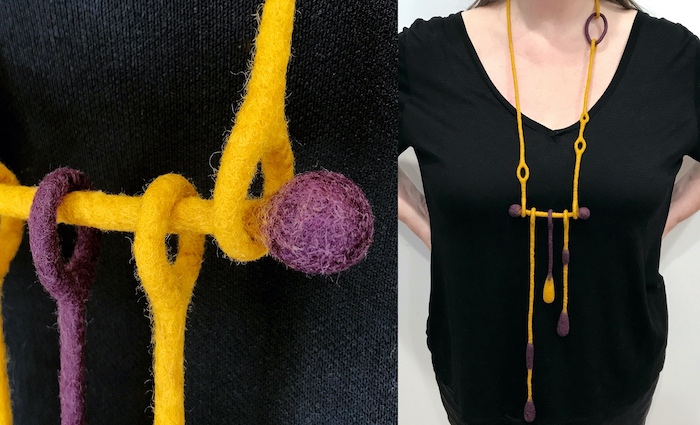
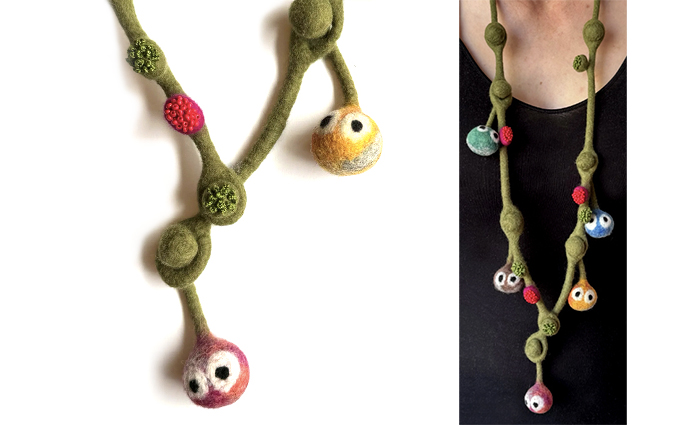
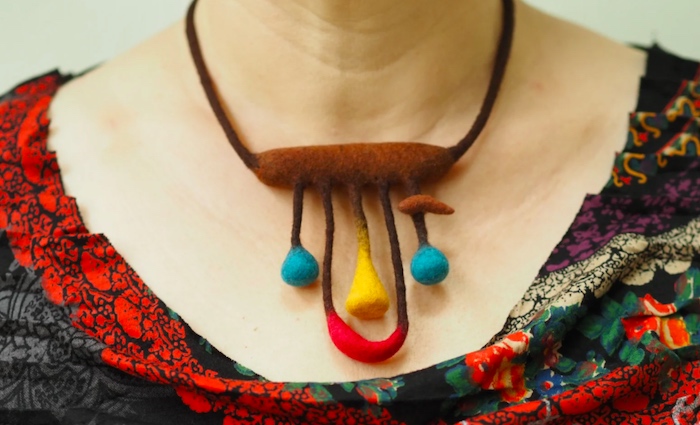
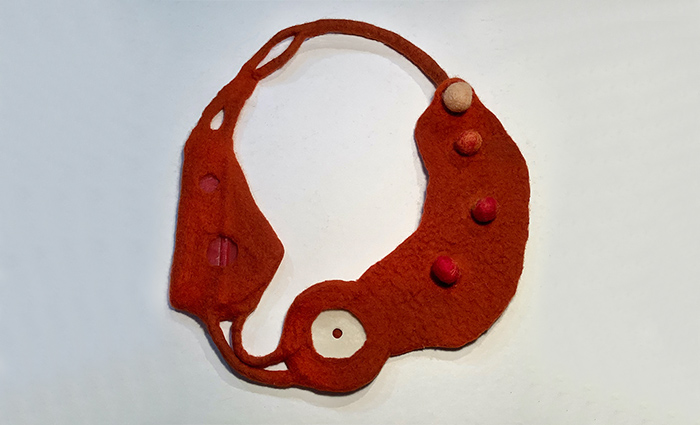
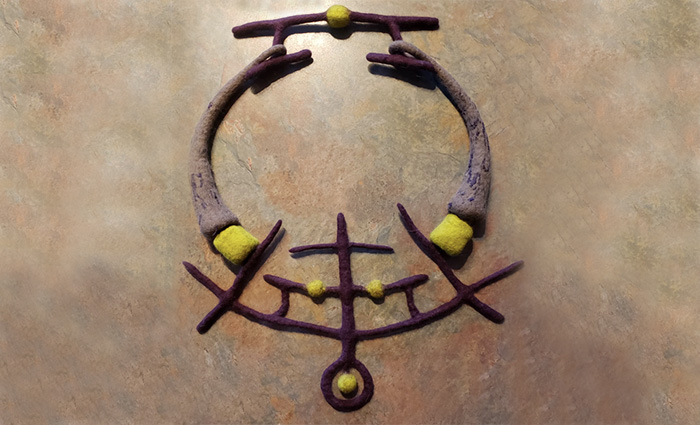
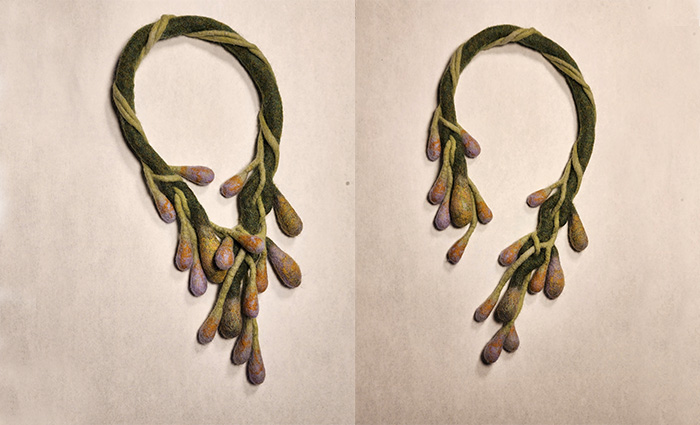
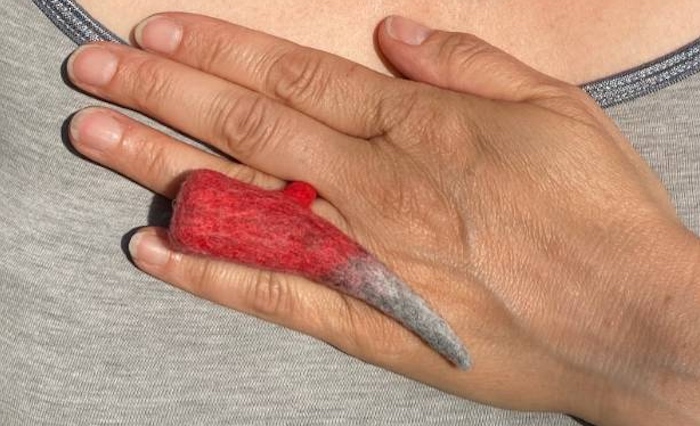
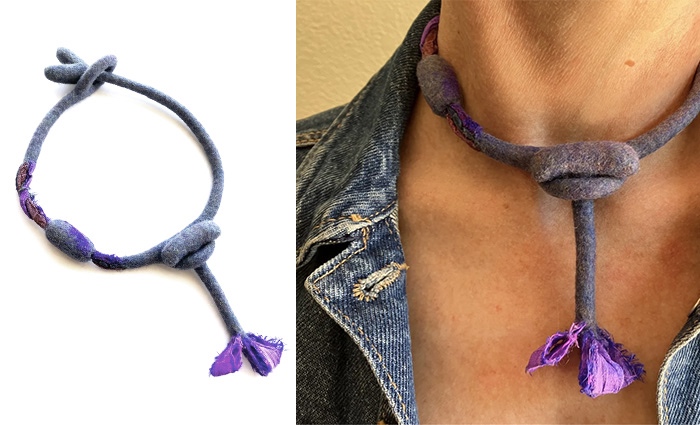
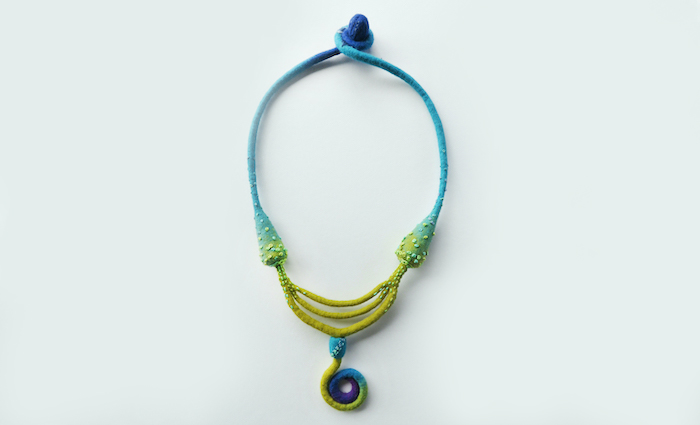
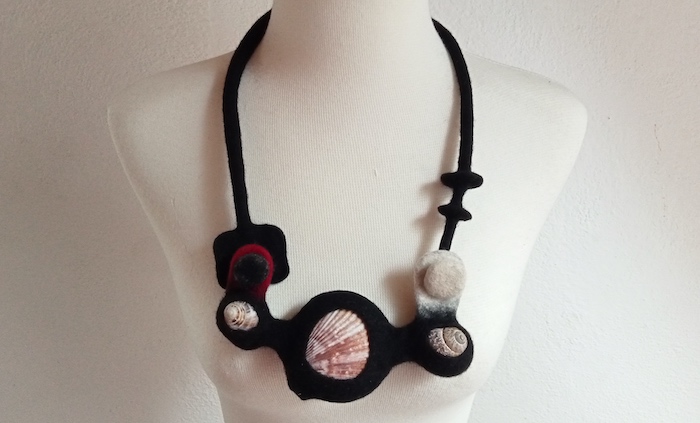
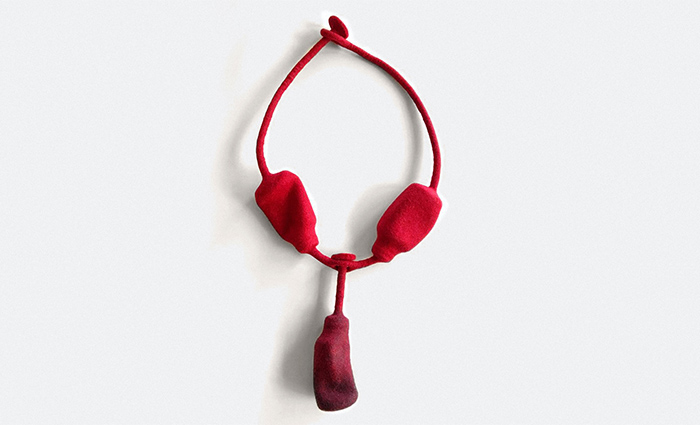
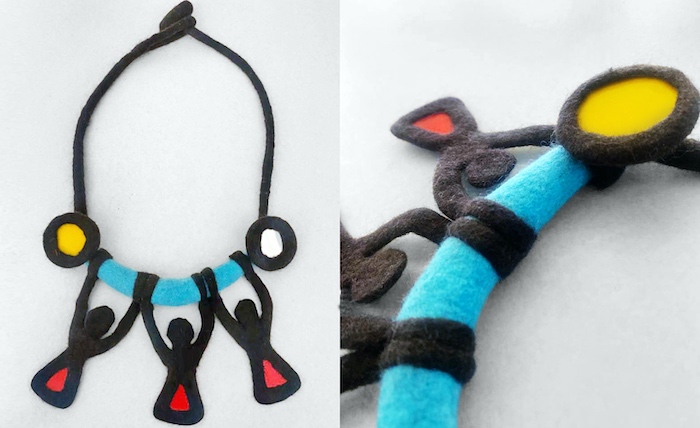
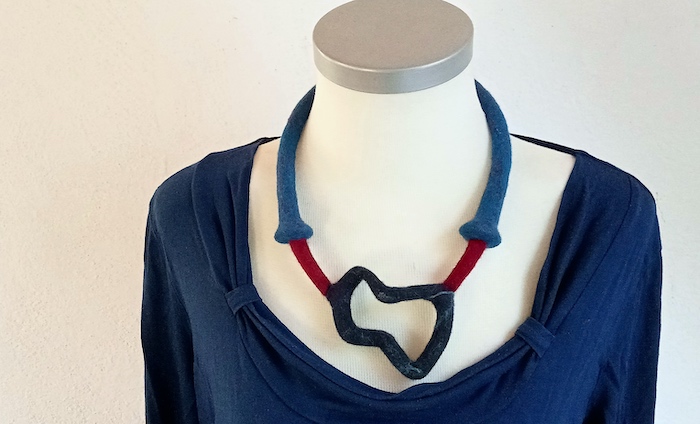
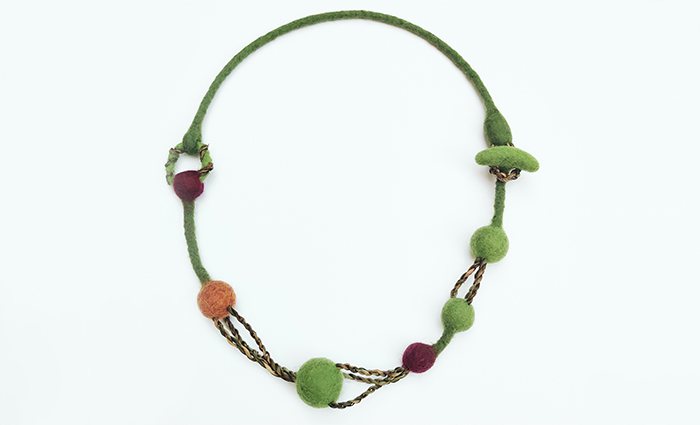
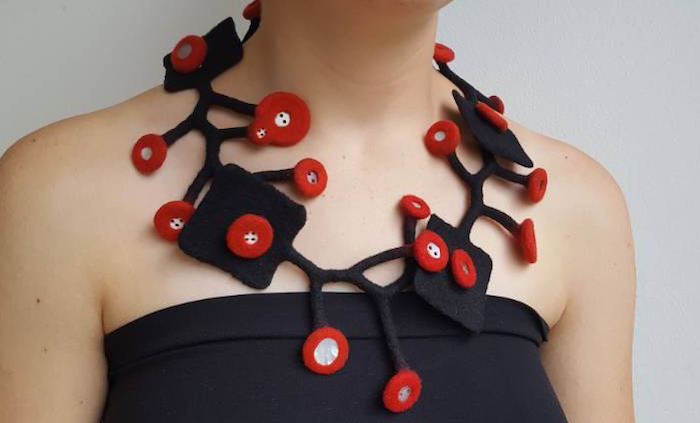
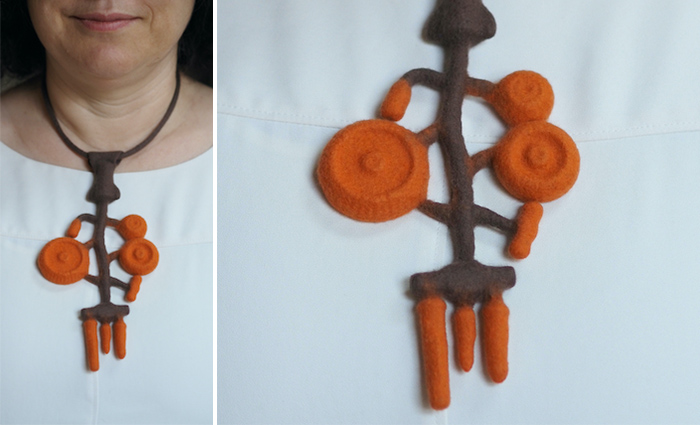
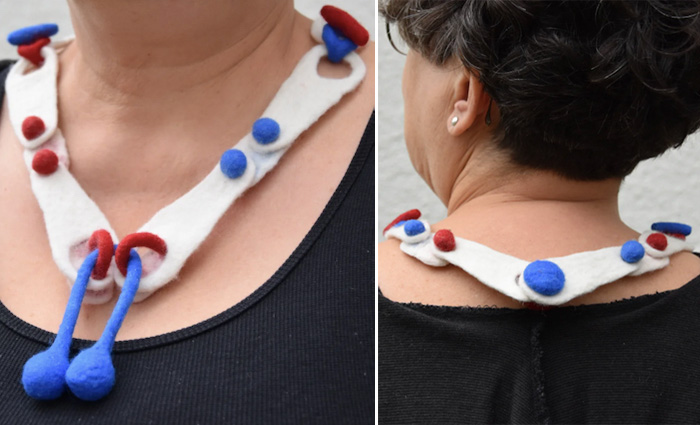
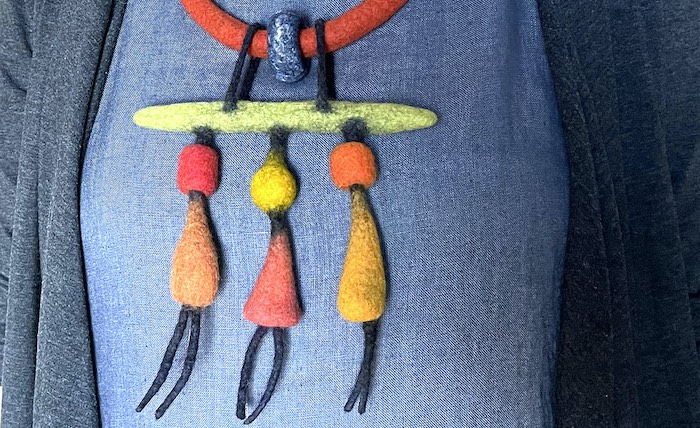
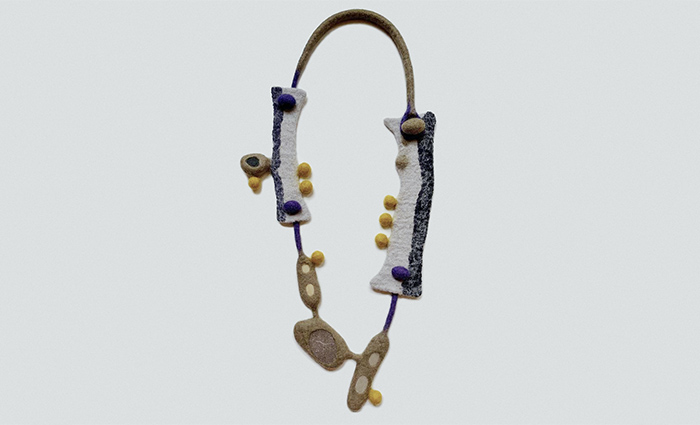
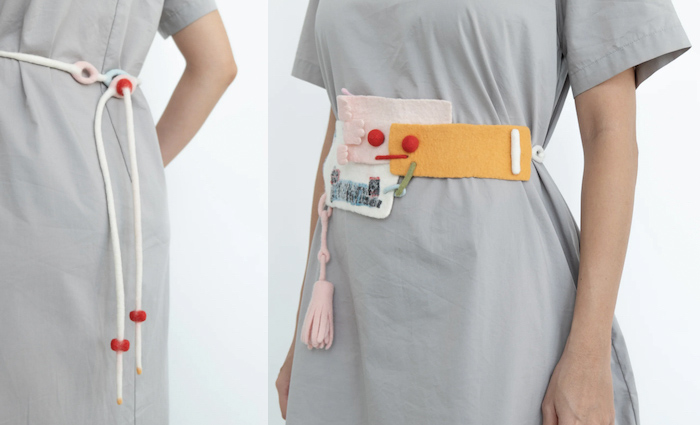
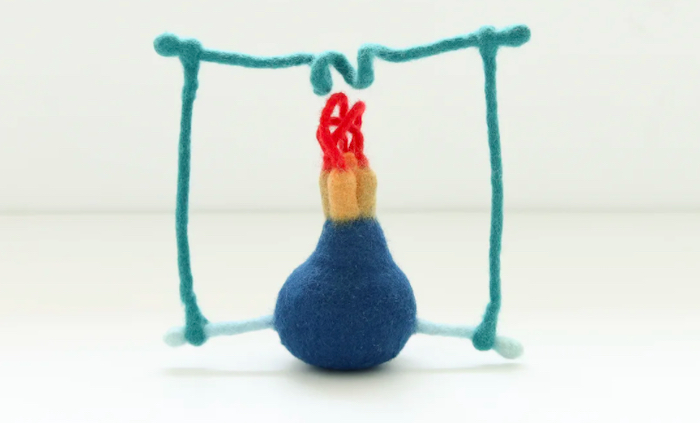
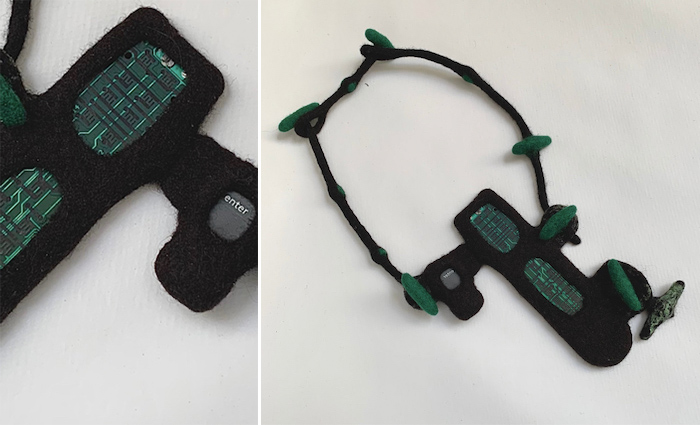
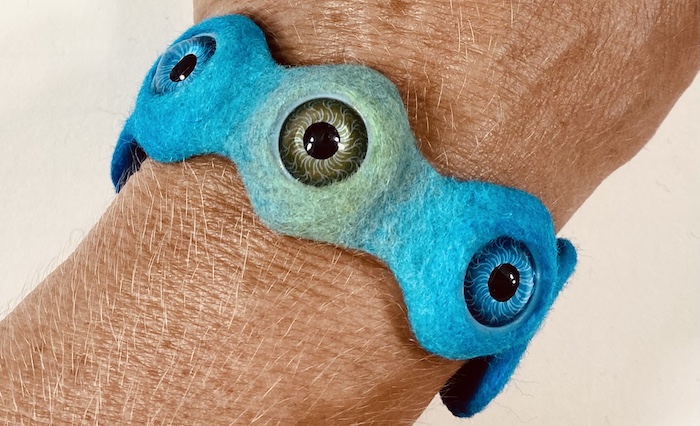
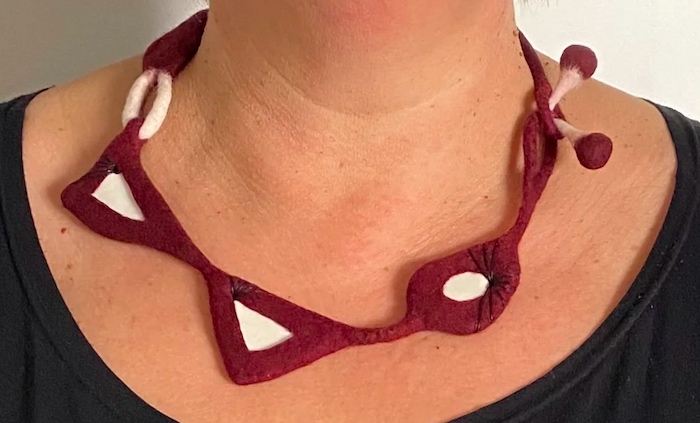
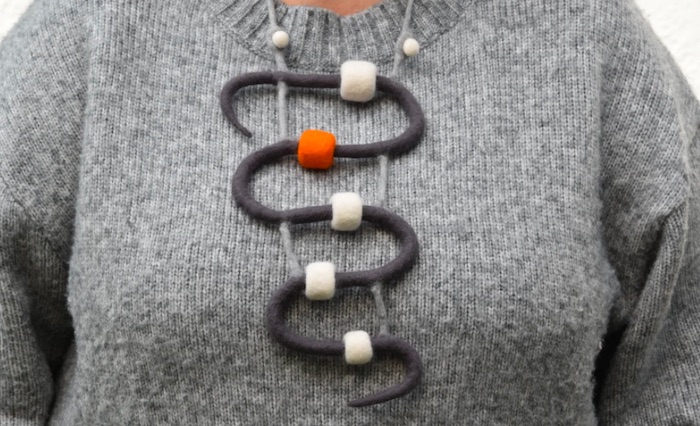
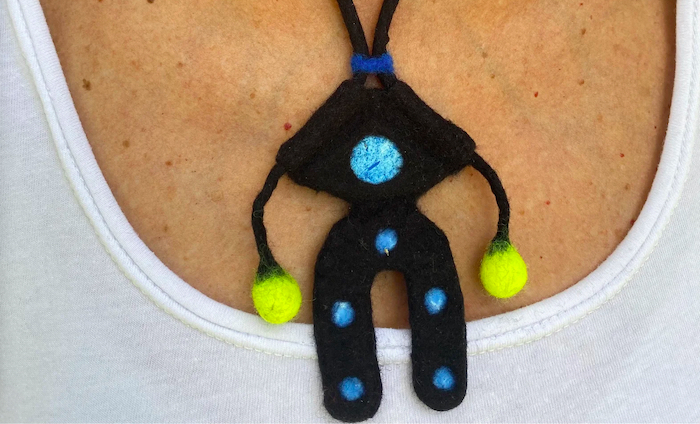
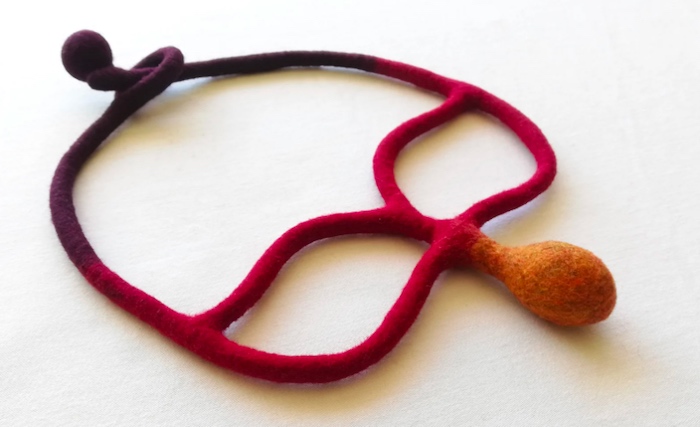
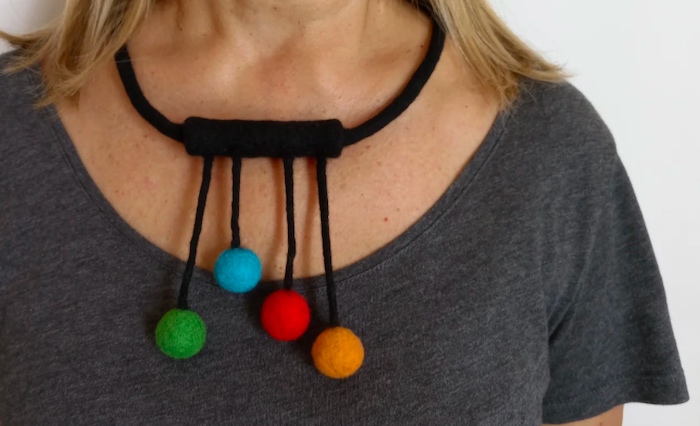
Wet Felting for Shaping Solid Form, Patterning Surfaces and Sculpting Hollow Dimensions
6 learning modules, 11 weeks, 2 supported projects, 15 participants max
Course hosted on the Ruzuku platform.
Next edition September 8- November 24, 2024 + platform access through February 9, 2025.
Enrollment is OPEN to those who’ve completed Course 1.
With Course 1 as a prerequisite, the 6 Modules of Course 2 are more concentrated as there is not a need to occupy screen time with foundations such as layout, rolling, fulling, etc unless there is a notable divergence from what was shown in Course 1. In addition, more advanced concepts, STRONGFELT’s comprehensive studies that have determined certain parameters of working and unique techniques that have never been taught to this extent in STRONGFELT’s Face to Face curriculum are shared.
Partial Felt is the term I use for creating a 2D layout of wool fibers and proceeding with wet felting to establish a specified amount of shrinkage for the intended application. Course 2 explores a breadth of structural and aesthetic qualities of partial felt that exist depending on the initial weight of fiber laid out (how many grams per square inch), at what point shapes are cut in the range of possible shrinkage for that weight of layout, the size and design of those shapes and into or onto what type of fiber layout they are applied. Pre-felt is the term commonly used to describe this wet felted material and is also used when referencing machine needle punched sheets/batts. However, pre- means previous to or before felting, therefore, I find it not a fitting name for the state of material nor does it encompass the range from beginning of intertwinement to fulled (max material density by hand or machine). Call it what you wish, but know that commercially prepared machine needle punched sheets/batts have different characteristics than studio made wet felted partial felt and as the maker of such there are many variables and possibilities!
Module Topics & Course Structure:
The structure of Course 2 mimics that of Course 1 in regard to content access every Sunday to be completed at each participant’s own pace and level of extensiveness during that week while being encouraged to post pictures, questions and comments for group discussion on the chat forum. This course varies in that for the first week (thus 11 weeks vs 10) participants will access a video for preparing different weights and integrities of partial felt for use throughout the duration of the course before beginning module content in week 2. Each module contains an increased average of 2.5 hours of video demonstration generally divided into two segments (though some modules have 3 or 4 video segments) and a PDF that outlines the content, clarifies the math involved and will assist with long term retention by highlighting key concepts while correlating new content with the prior module and leading into the next.
In Modules 1-3, partial felt is applied as the ‘core’ in the dry preparation for solid forms to structure distinct shaping from tiny jump rings to larger shapes for components, chain links, pendants and accessory closures resulting in a unique linear surface effect from the cut edge. The application of partial felt will shift from the internal to surface use for covering the “fiber tail/skirt” of solid form connections and in Module 4 will be applied to create distinct color areas and fine patterning. The following week (week 6), participants will implement their new learning and compose/propose a design based on their personal aesthetic, inspiration and interpretation of the project prompt. Each participant will have an individual zoom meeting ideal for their time zone for direct instructor feedback that may or may not be open to the entire group depending on that participant’s preference, keeping in mind that everyone will learn more if these meetings are shared experiences. Making the project will ensue after the design meeting and finished work will be posted when completed for discussion/feedback during week 7.
In the second section of the course, beginning with Module 5, surface patterning will become surface texturing as the application of partial felt is used to raise a third dimension of hollowed formations as a result of differential shrinkage and circumferential/perimetral fulling. Applying partial felt in the layout of fiber around a 2D resist in Module 6 will not only allow for patterning and texturing hollow form beads and pendants, but the application of this structural shrinkage concept to the wall of a hollow form will allow concave and convex surfaces to develop, shaping previously unimaginable forms. With an increase of spatial awareness and an overstanding of the possibilities of extreme differential shrinkage, participants will be prompted to design forms and highly dimensional surfaces for Project 2, concluding the formal class with another round of zoom design reviews in week 10 followed by a showcasing and discussion of participants’ work in week 11. Examples of the studies from Module 1-6 along with participants’ projects from prior editions beginning in the spring of 2023 can be viewed in the image carousels below.
Course 2 content is equivalent to that of approximately 12-13 days of face to face STRONGFELT workshop content + 2 supported projects. 16 hrs of video instruction with a broad and close up camera angle may be accessed for 5 1/2 months from the beginning of the course (double the formal course length), but will not be downloadable. 78 pages of PDFs will be printable.
No materials provided.
Upon enrollment, participants will receive a welcome email and access to an introductory video illustrating an ideal set up for working, household and easily accessible tools/equipment to gather and a few items to order if not already a well stocked fiber enthusiast/felter. Print the accompanying Equipment, Tool & Material list PDF for specifics about sizes and amounts so you can be prepared to begin the course on the date scheduled.
The course is in English. Participants will need computer access, a strong internet signal and a digital camera/phone for sharing and documenting your work. Basic computer navigation skills suggested.
Content is © STRONGFELT, inc. All Rights Reserved. Please do not share your access to the online video or pdfs as this is nearly two decades of my experimenting, analyzing, refining, as well as detailed articulation & sequencing for optimal instruction. Do please encourage those you feel would enjoy and benefit from such learning to take the course as this will allow STRONGFELT, inc to continue to produce additional courses of high quality. Thank you.
Online & Onpoint! Course 2 APPLICATIONS OF PARTIAL FELT Module Studies
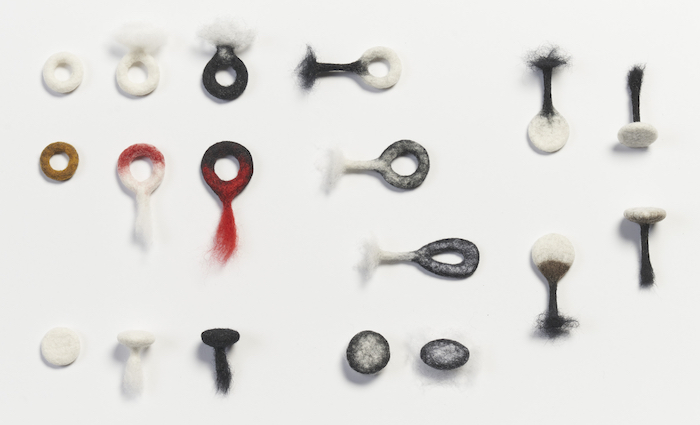
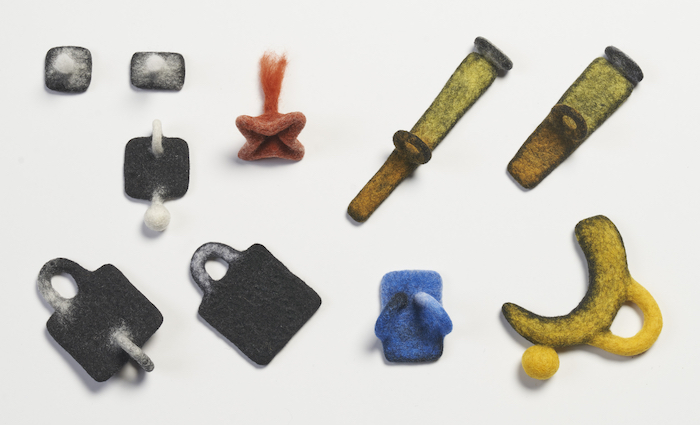
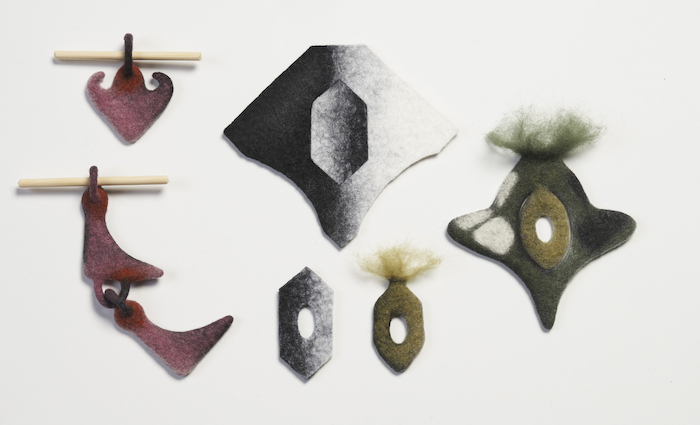
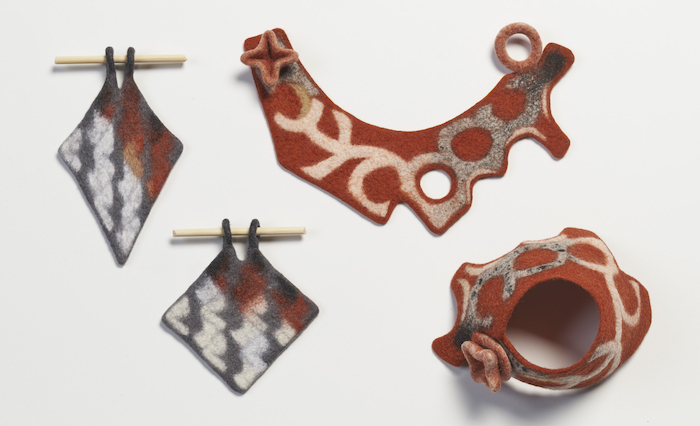
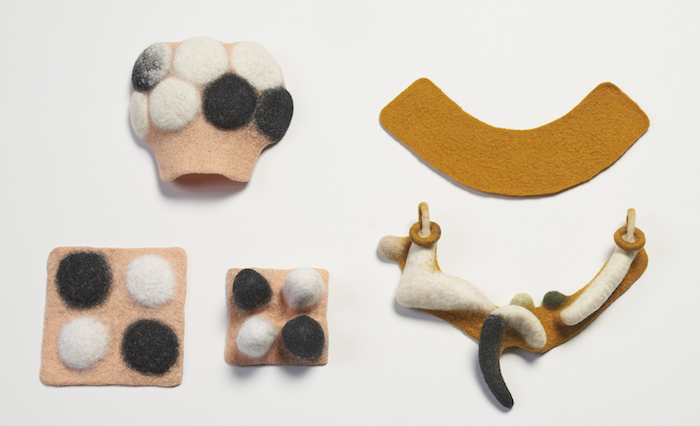
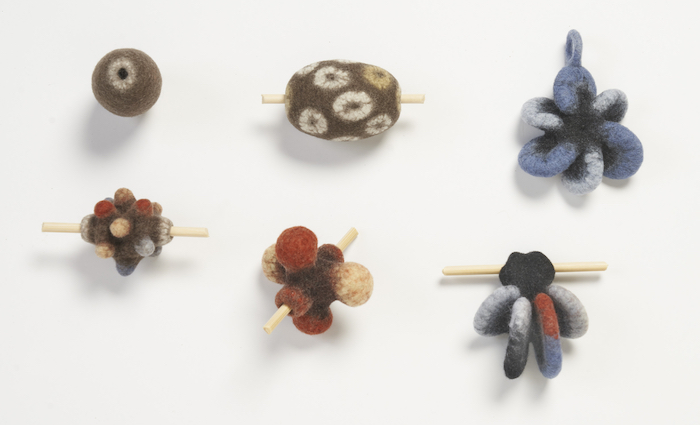
Online & Onpoint! Course 2 APPLICATIONS OF PARTIAL FELT Participants’ Work
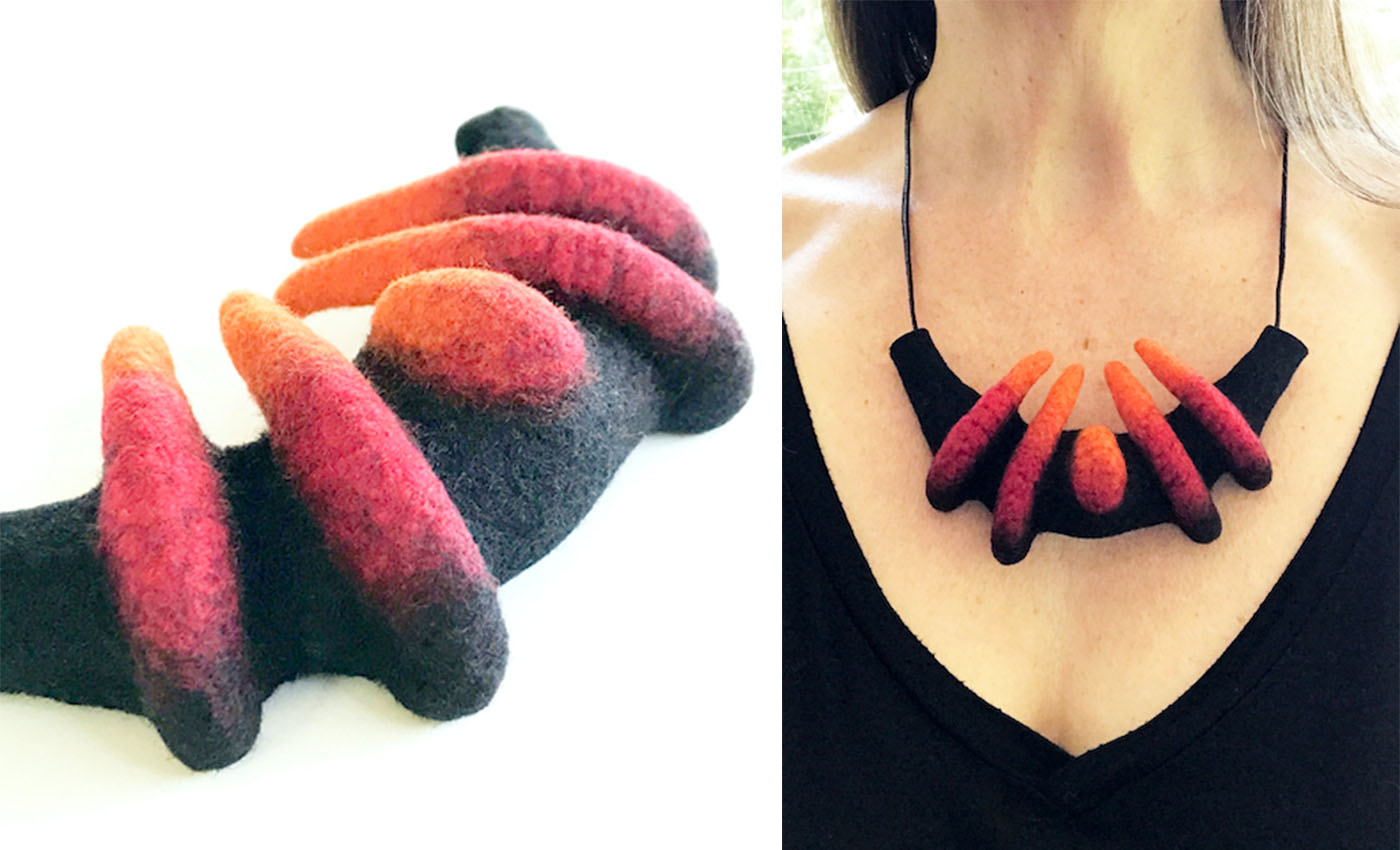
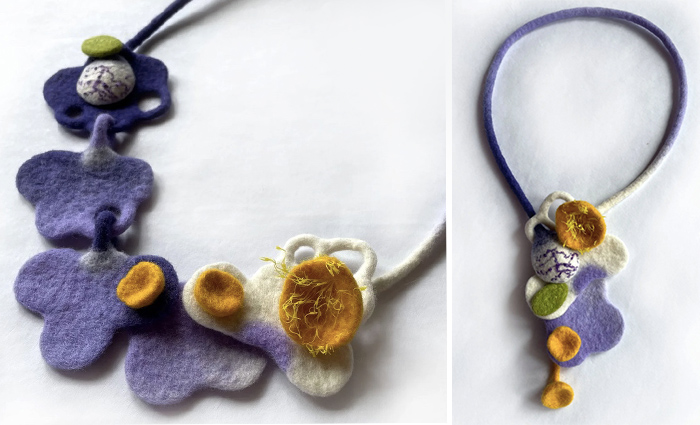
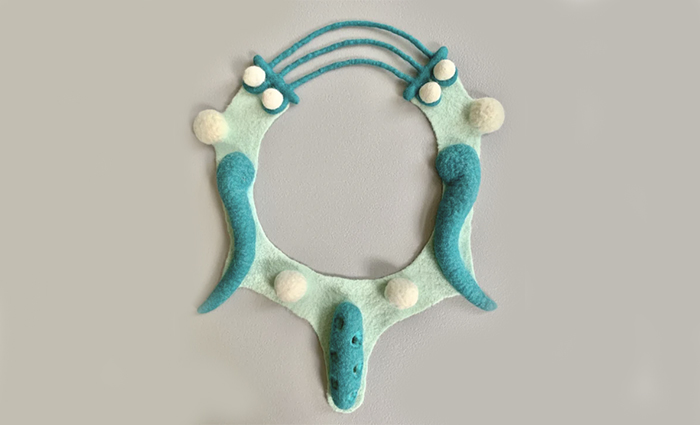
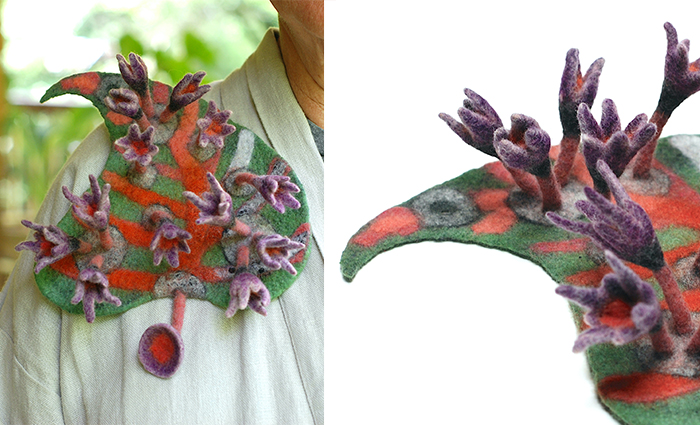
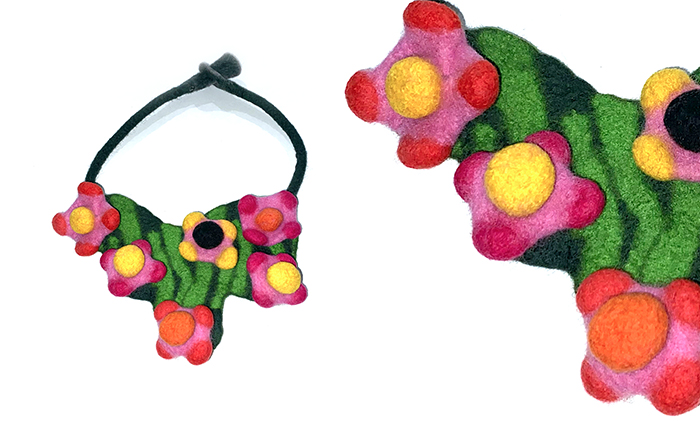
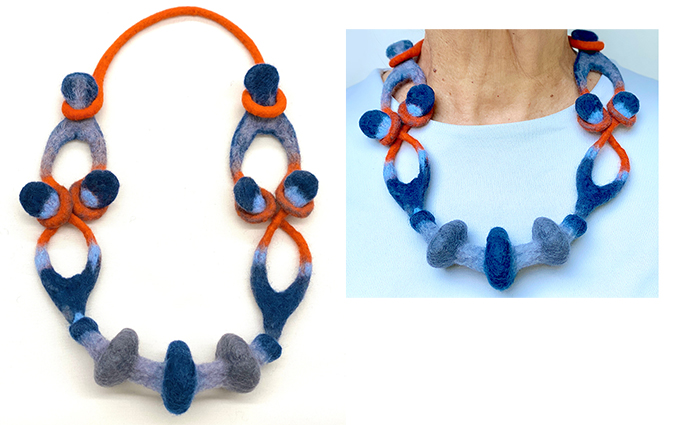
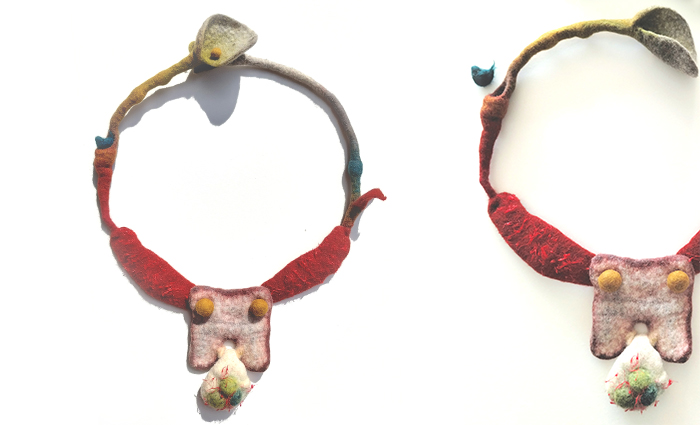
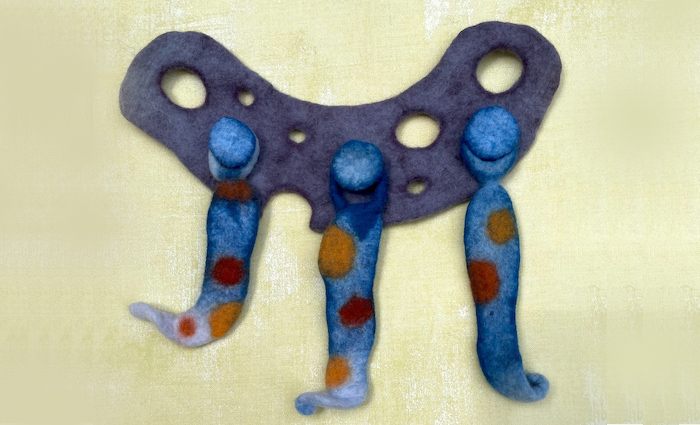
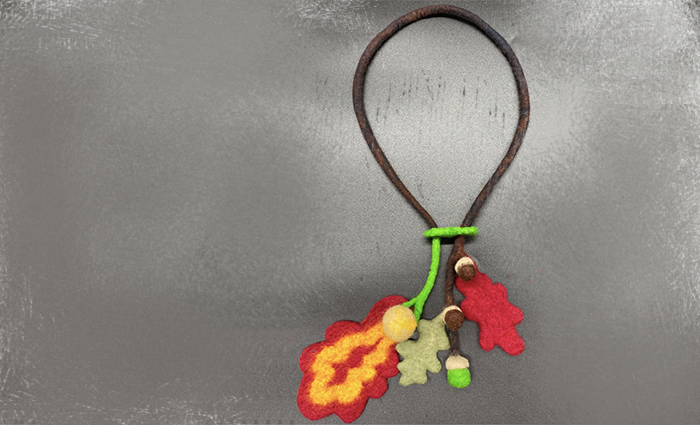
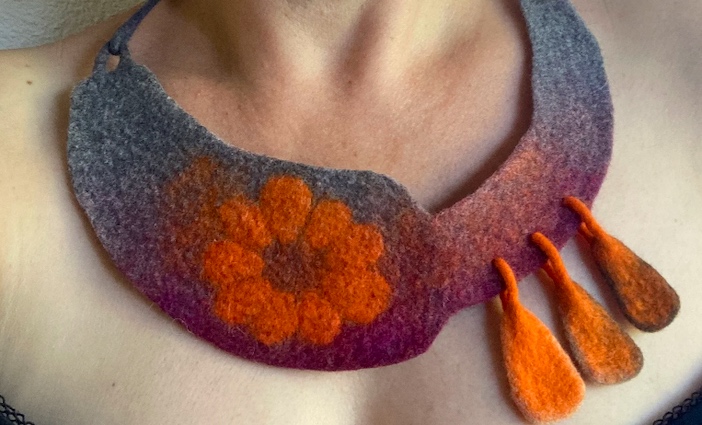
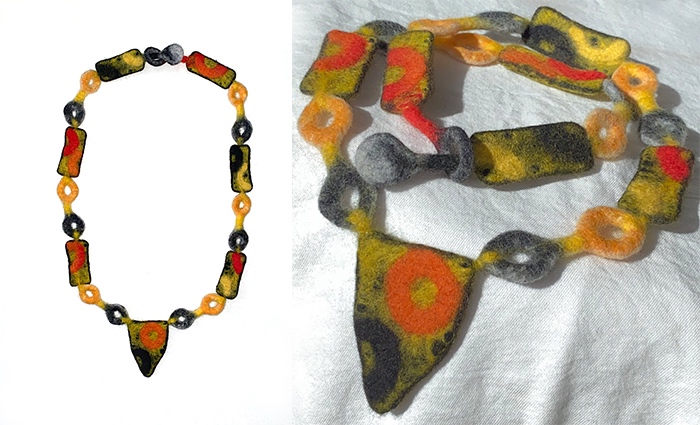
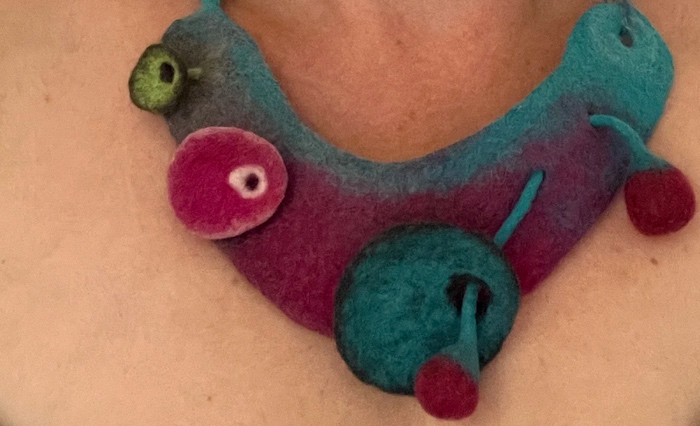
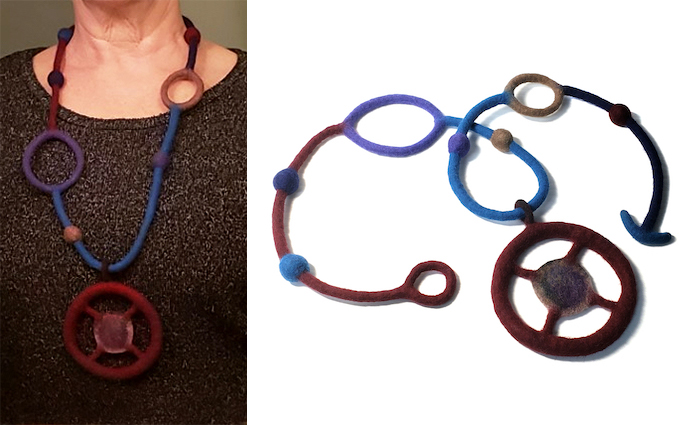
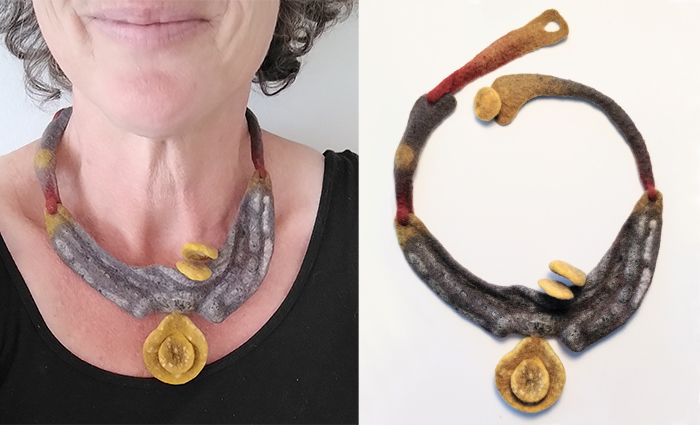
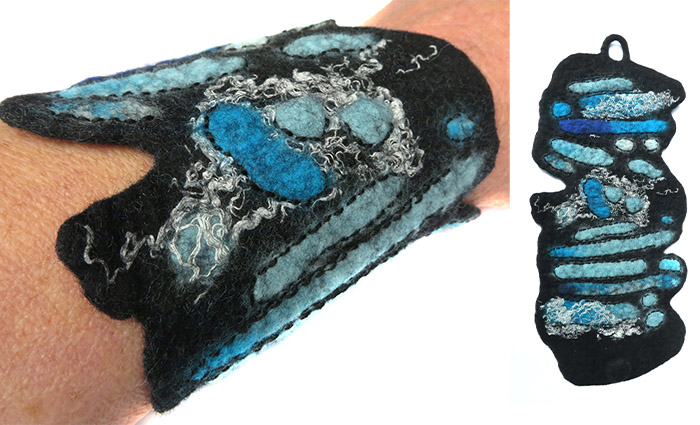
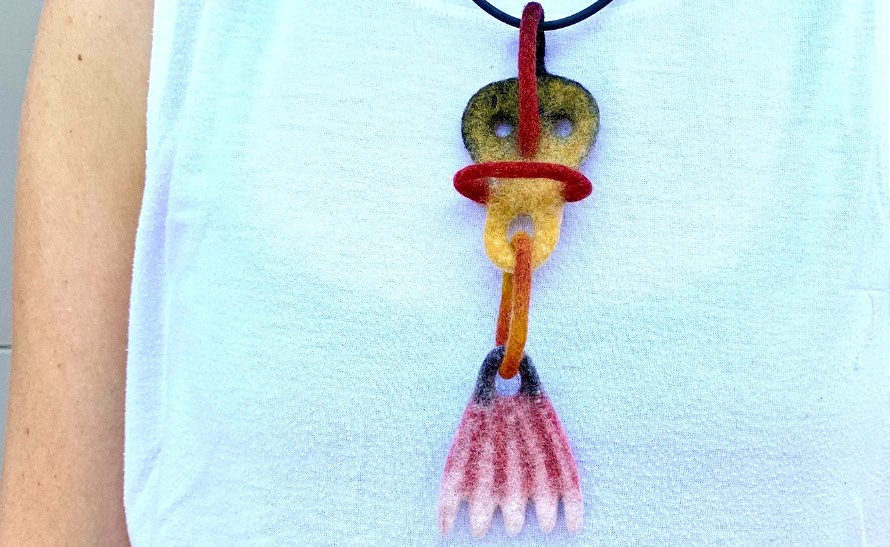
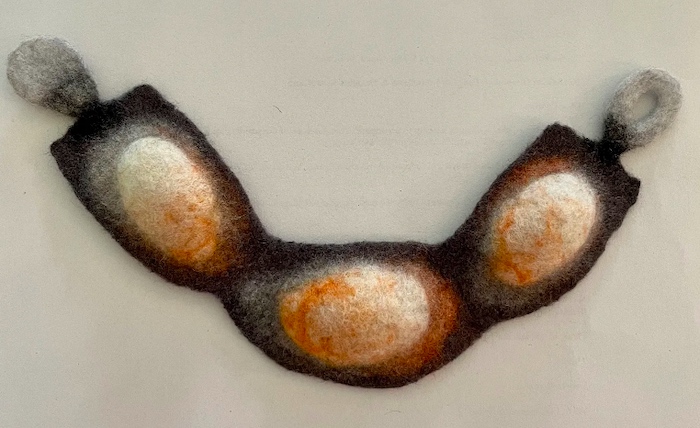
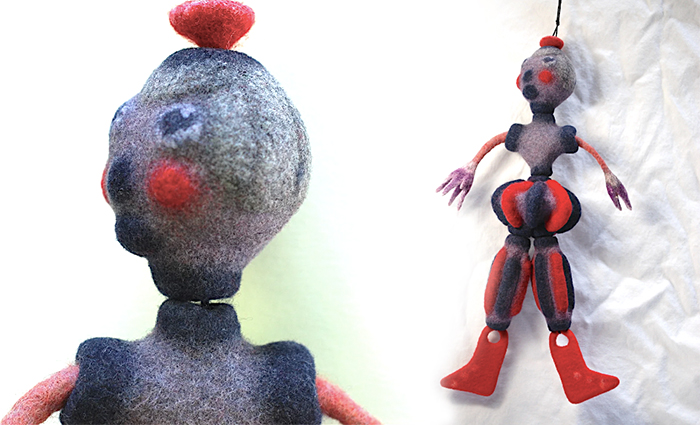
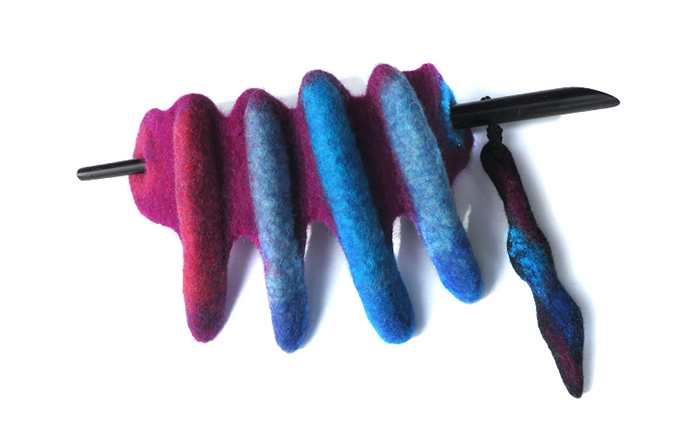
“I have thoroughly enjoyed this course, and it has pushed me beyond my comfort zone – a very good thing. The exercises were challenging, but thinking through the examples and studies was definitely helpful. I made a lot of my own crib notes with alternative descriptions summarized in one place so I didn’t need to keep looking them up in the PDFs you supplied – which were super, thank you. Your handouts are so helpful and comprehensive, and the videos great for seeing the techniques in action along with your very descriptive and helpful narratives. Again, I truly appreciated the in-person reviews you gave for the design projects and thank you for adding this unique element to your online courses. I have learned an extraordinary amount from this and Course 1, and some of the techniques, like raising forms through differential shrinkage, have been eye-opening and revelatory – I can’t wait to incorporate them in my new work. Going forward, I’m expecting to have more free time to complete and explore the studies, and – if you’ll have me – joining the next course!”
-Lise Poulsen, C1 & C2 Participant
“There were techniques in Course 1 that Course 2 helped me understand in a deeper and more thorough way. There was one night I woke up and understood a segment that I did not “get” during the day. The course took a lot of time and retirement made it possible for me to complete it comfortably. Your two classes, Lisa, are the best felting classes I have taken, virtual or face-to-face. Your meticulous instructions, patience, willingness to answer questions, work through the math, and meet with us online are amazing. I think it is especially critical that you ask us to design and complete a project. So much learning!!! Thank you!”
-Janice Maatman, C1 & C2 Participant
“Thanks for the great class, Lisa. In every case, the module exercises helped me to better understand the learning. Even though I thought I grasped the ideas by simply watching, I always learned something unexpected or understood to a greater degree by working through the samples. Also, as in the first course, these samples make a wonderful reference as I move forward into my own practice. I fell behind a couple of times, but could manage (mostly) to keep up and a week between new material was such that I didn’t feel either pressured or anxious to move on, however, I completely understand that this varies for each individual. Congratulations on designing such a course. It’s obvious what a lot of work that went into it and your classes are by far the best online classes I have taken.
-Christine Stephan, C1 & C2 Participant
“It is definitely a follow-up to the first course. And again, an intensive course. Perhaps even more so than the first. There is a lot of depth to it. In terms of quantity, maybe you could make it almost 3 courses because you have so much content. What I think would be good is to indicate to participants that if you want to join the course intensively, you could have almost a full day of felting work each week. The more time you put in. The more you get out of it.” -Marije Kooi, C1 & C2 Participant
“I have gotten so much out of this course. I have the understanding and confidence to realize many of my ideas, and the inspiration to build on what I know with some wacky experiments. I have always been an experimenter, and I know that when you make a creative leap, you can leap a lot farther if you leap from a solid foundation rather than from shaky ground. This course gave me the solid foundation and the inspiration to keep leaping!”
-Jennifer Piper, C1 Participant
“This is my third workshop/class that I have taken from Lisa and in every class her handouts have been superior, and I refer back to them all. the. time. and these handouts will be no exception. With each exposure something new stands out that I may not have paid close attention to the first time. I also believe that like in my martial arts training it’s always good to review basic technique. I have a deeper understanding of the math, due to more exposure and practice. I have a sketchbook of ideas that I have been thinking about and in a few cases had gotten stuck figuring how to put the pieces together and because of this class I look at those sketches and have some fresh approaches to making them that will work better than I had originally planned.”
-T Westkaemper, C1 Participant
“I thoroughly enjoyed being a part of Lisa’s online workshop and have learnt new techniques and processes to take forward on my felt journey. Information for each module is presented in detailed videos with clear instruction and explanations and an accompanying downloadable pdf. The chat forums allow students to post work and are a great way to share and support each others’ progress. It wasn’t a surprise knowing Lisa’s work, that she would create such an amazing learning experience. I will definitely be signing up for Course 2 and wouldn’t hesitate in recommending this to anyone interested in learning more about this detailed, technical way of wet-felting.”
-Lisa Hayes, C1 Participant
“Lisa’s teaching style is very engaging and her felting experience was very generously shared. There is no literature available – that I could find (and I have a PHD in research) – that gives such useful insights into surfaces, connections, enclosures, layouts and shrinkage rates. My approach to felting has changed so much as a result of this course. It was such a revelation to be able to plan and sketch out a 3D design and reproduce it in felt. Lisa said the ‘felt will sing’ and she is so right – it’s like a communion with your fingertips!”
-Jan Klaver, C1 Participant
“I took the foundation felt jewelry course online from Japan. I was able to learn smoothly with the organization of the stages of the course and courteous responses of the instructor. I learned more than expected with videos, group reviews of projects and asking questions through chat and email. I was most excited with confining solid objects in felt. The possibilities expanded beyond imagination.”
-Sawori Yoshioka, Course Participant via Nova Scotia College of Art & Design
“Lisa’s on-line felt jewellery class was both challenging and exhilarating! The combination of video instruction and in person feedback provided a complete learning experience that was well paced and easy to understand. Samples of new techniques were created weekly and then applied to projects. I now have a valuable reference library of samples in various sizes as well as completed wearable jewellery pieces. Each video was very thorough with methods clearly explained and documented and the “in person” on line meetings provided an opportunity for interaction and critique with both Lisa and fellow students. A great class for anyone wanting to learn the technical aspects of different clasping methods and how to make consistent well finished felt shapes as well as exploring your own jewellery aesthetic. I thoroughly enjoyed Lisa as an instructor who pushed my boundaries, and I am looking forward to taking more classes with her.”
-Sandi Luck, Course Participant via Nova Scotia College of Art & Design
